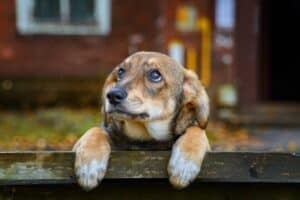Before introducing the birds of your choice into their new home environment a complete check-up of the whole facility must be made.

An abundance of food and water must be available on their arrival as this reduces the need to disturb them when first set free. Multiple receptacles all over the aviary, if very large, will allow them to find what they need easily and quickly. After a while the number of feeding stations may be gradually reduced. Place at least one food and one water dish on the floor because many birds eat from the ground in the wild, at quarantine stations and at breeders.
Birds can starve to death in the presence of ample food because they did not know where to find it and at certain stations the pecking order pressure kept them away. Once the birds are established the others will show any newcomers where to feed.
Always introduce new birds early in the morning before nine but never later than noon. They will have to go through an adaptation procedure and will need to seek and select safe and secure roosting spots before sunset. They will need to seek out suitable food and water venues. Some birds can just perch and observe for many hours before exploring the aviary. Adjustment is not immediate even if the interior design is optimal. Instinctively they need to review their situation of safety and security in order to develop confidence to be adventurous.
This includes the remote observation of other birds.
Towards the end of spring into early summer is the most suitable time to relocate indoor birds to an outdoor aviary. If the temperature, lighting and spatial availability is different they need to overcome this stress and change through their own means. The transition, therefore, is less dramatic at that time of the year as most homes, facilities, quarantine, pet shops and breeder’s aviaries will be at a comfortable and similar ambiance.
Painting the cage and wire black will almost eliminate the aviary visually and enhance the colours and visibility of avian activity. Black exterior paint also reduces the reflection of sunlight. All paint must be lead-free. The interior must not be painted as birds need to be able to see the mesh wire to prevent injury.
Internally one can grow small non-toxic trees or use perches from dead trees. It is best to avoid dowel sticks and wooden poles which are so smooth that it causes friction under the foot pads which become infected if these perches become moist after washing off bird droppings. If one creates reasonably deep sand trays and plant the very seeds that most seed-eaters enjoy, the birds will thoroughly enjoy and utilise the greenery that emerges. Any plants planted in an aviary must be well-known and non-toxic.
Planning ahead, one can consider designs and materials which will be suitable for a wide variety of bird species, from tiny finches to large parrots in case one decides to change the breeds at a later stage of one’s life.
For example some people become fed up with raucous parakeets and want a bit of peace-and-quiet they may want to resort to having canaries and finches for the serenity and pleasant sounds. The addition of quail at ground level broadens the spectrum of birds and aviary utilisation. Bird species need to be compatible. Overcrowding causes a serious pecking order system and those at the low level of the hierarchy can be pecked to death or shoved out of the way at feeding stations subsequently starving to death.
There are comprehensive and decent guides on how to build an aviary. This must be referred to, as well as consulting with an avian veterinarian, picking the brains of a bird breeder and tapping in to the experience of other bird keepers to obtain broad-spectrum ideas which can be incorporated into your concept.






